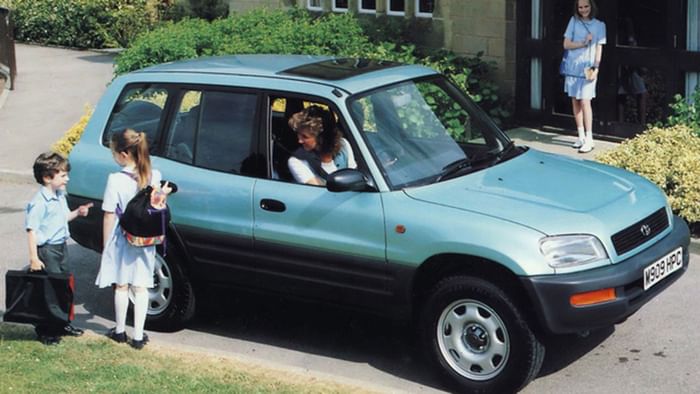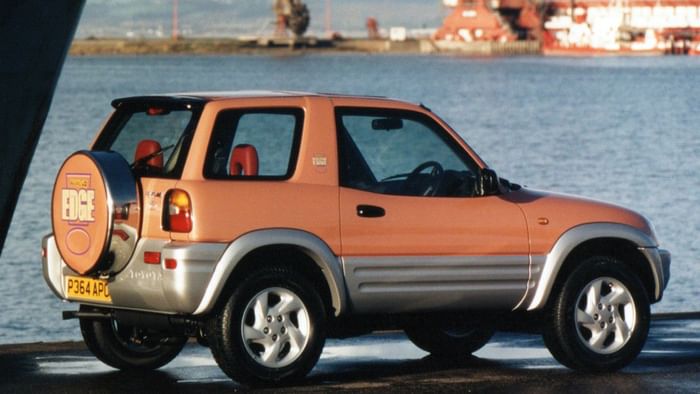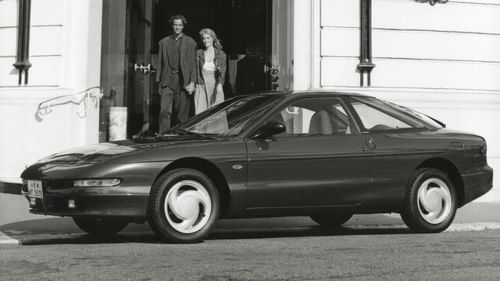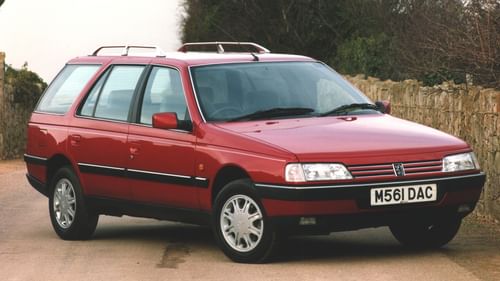
Even today, thirty years on from its launch in 1994, the Toyota RAV4 still manages to stand out like a Ginger Spice Union Jack dress at a black-tie event. Just imagine what it must have looked like in a Toyota showroom, parked alongside the Corolla, Carina and Camry; its otherworldly styling even managing to upstage the MR2 and Supra. Here was a leisure vehicle designed to spice up your lifestyle, as the Spice Girls nearly wailed.
The idea of a Recreational Activity Vehicle with four-wheel drive (RAV4, innit?) wasn’t entirely new – some would argue that the Suzuki Vitara got there first – but Toyota was the first company to nail the execution. Windsurfers, mountain bikers and bungee jumping enthusiasts greeted the arrival of the RAV4 with a merry dance and an appreciative nod. Even What Car? proclaimed it ‘the world’s first GTi off-roader!’ on the front cover. ‘At last! A baby 4x4 that goes,’ writ large on page three must have put the willies up the purveyors of rival sport 4x4s.

Those rivals included the Vitara, Daihatsu Sportrak, Vauxhall Frontera Sport, Jeep Wrangler and, to a lesser extent, the Lada Niva. Each one felt like a scaled down version of a 4x4, whereas the Toyota RAV4 had the feeling of a car with SUV credentials. ‘Its concept, appearance, and technical features put it in a class of its own, as an alternative to sporty compacts and the classic off-road vehicle, or simply as the ideal car for those who seek driving pleasure without wanting to compromise either on comfort or everyday practicality,‘ Toyota claimed. Though it looked like a supermini top bolted onto an SUV bottom, the RAV4 featured a monocoque body and was based on the same platform as the Corolla. The engine and some components came from the Carina/Camry, while the suspension and transmission were sourced from the Celica GT-Four. It launched in the UK as a two-door, four-seater model, with a 2.0-litre 16-valve engine mated to a five-speed manual or four-speed automatic gearbox. Comparisons were drawn with the contemporary Volkswagen Golf GTI, albeit in 8- rather than 16-valve guise. Only marginally heavier but more powerful, the RAV4 could certainly keep up with a hot hatch, especially over loose or slippery surfaces. The target market probably didn’t care about 0-60mph times and top speeds, but they would have appreciated the all-weather grip and fine handling. Coming from a Frontera Sport or Wrangler, the RAV4 could easily live up to the wannabe hot hatch hype.

Toyota filled the promotional material with images of shiny happy people doing whatever things shiny happy people do at weekends. Chasing down unsuspecting Mk3 Golf GTI drivers would have been high on the agenda, as they pondered how they had managed to cope with a humble hatchback or estate. ‘Weekends will never be the same again,’ was a rather bullish claim, even for a game-changing lifestyle car like the RAV4. It lived on until the turn of the millennium, by which time it had spawned a longer and more practical four-door version, an EV for the U.S. market and even a cabriolet, although few very drop-top RAV4s were sold. Subsequent generations were more mature and sombre-suited, as if the weekenders had grown up and settled down.

Is it a classic? Absolutely, even if has to shoulder some of the blame for the rise of the modern crossover. Still, where Toyota led, others followed. What was that line about the car in front?
This article first appeared in issue 1 of Classic.Retro.Modern. magazine.





